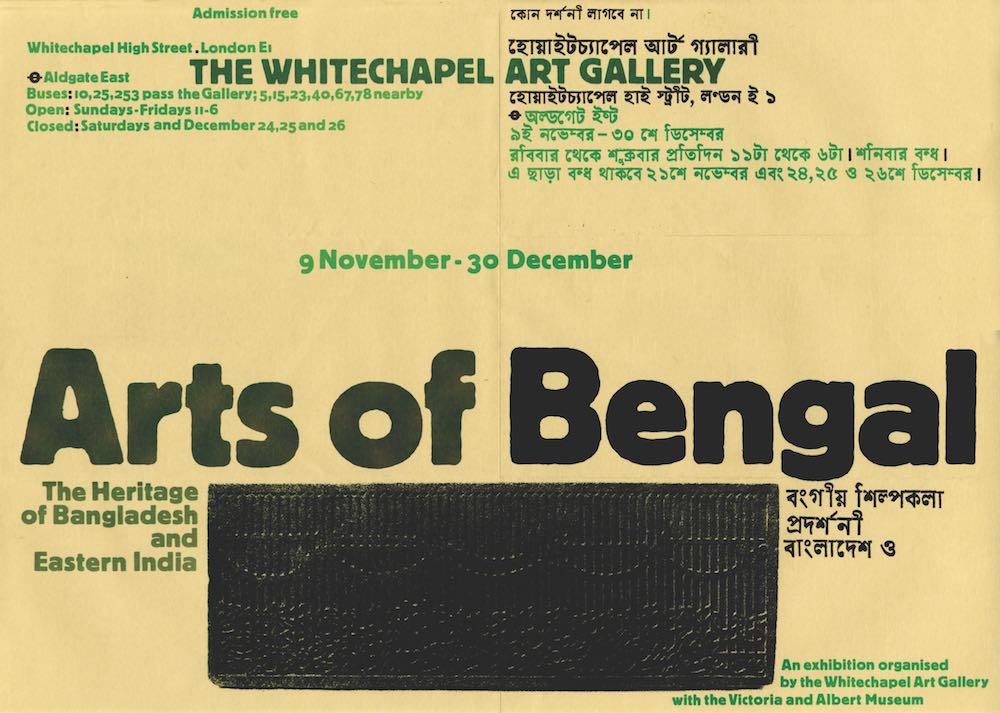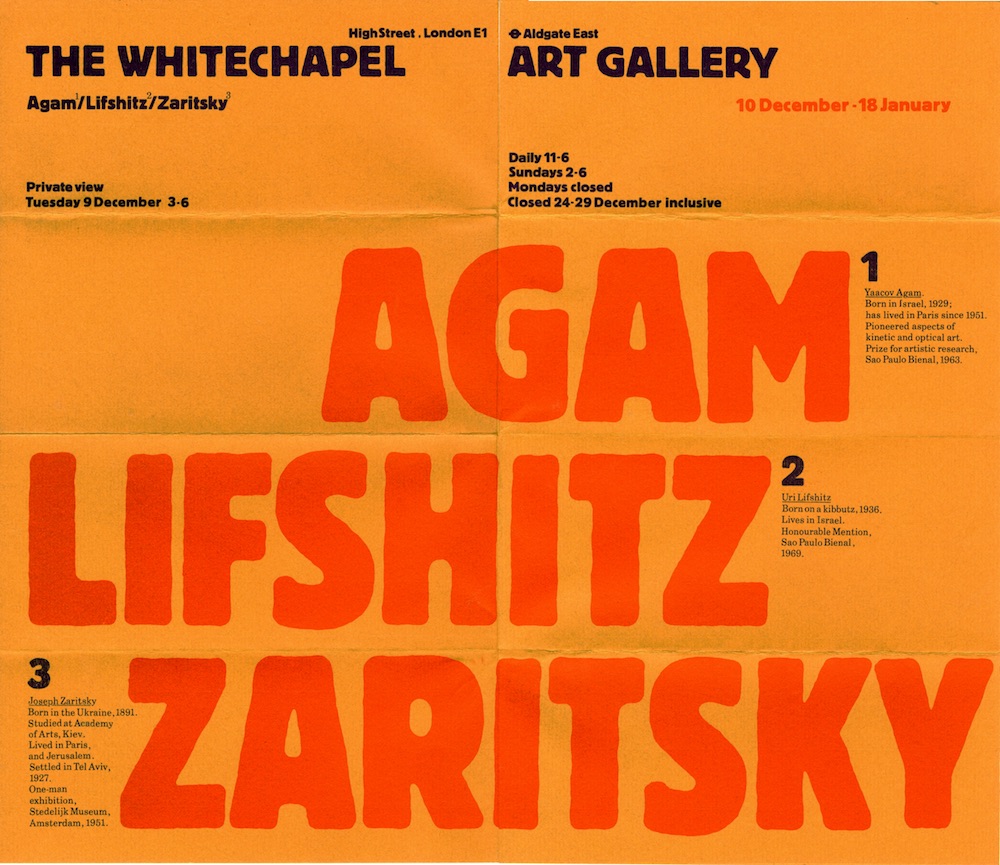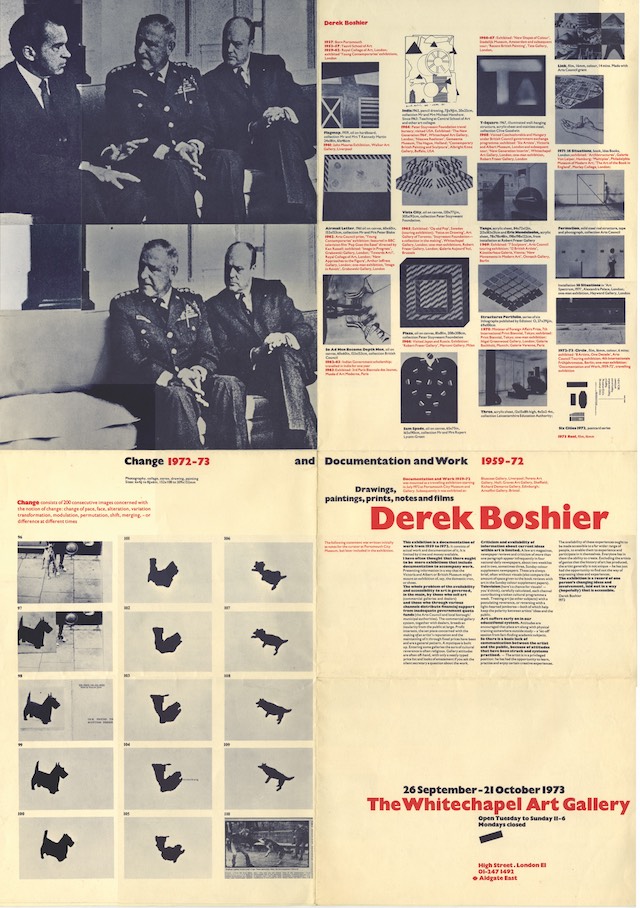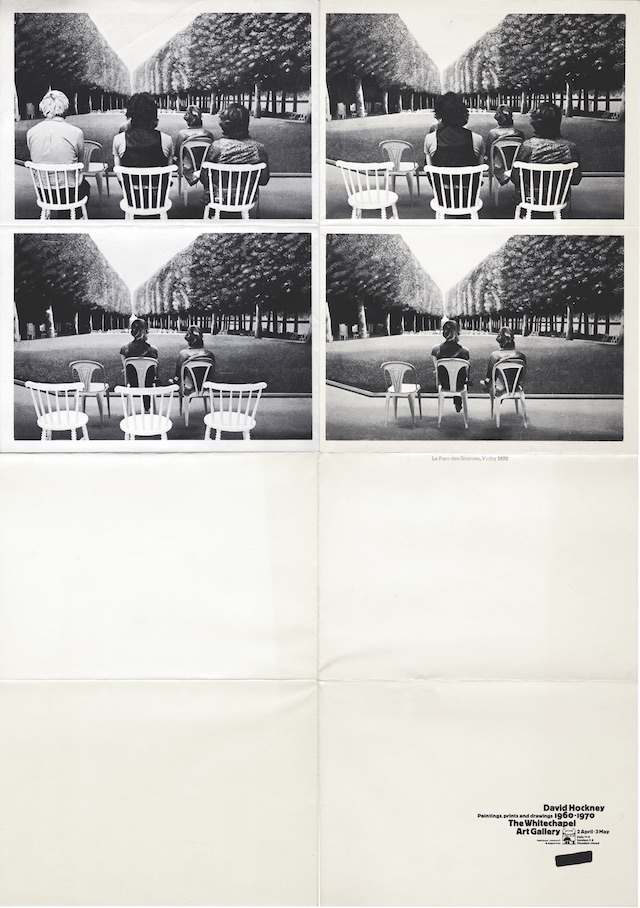Celebrating Richard Hollis’s design work for London’s Whitechapel Gallery

“BILL POSTERS WILL BE PROSECUTED” read the brass plaque next to Magdalen Bridge in Oxford, below which a sloppy marker pen had scrawled “BILL POSTERS IS AN INNOCENT MAN”. Poor, poor Bill, we all regularly agreed. This joke can be seen around the world, and of course the ubiquitous and prolific Mr Bill Posters has never been prosecuted, because the sign actually refers to the advertising posters (or “bills” as they were once known) that cover the back alleys, undercrofts and vacant shopfronts in the overlooked parts of towns and cities. Usually advertising barely legal club nights, obscure cover bands and dying circus acts, they have a reputation for being junk. However, posters can have life and character that is lacking in other types of advertising – even in some art work.
Take a look at a wall that has been layered with posters over many years, and it’s likely you will see a dreamlike delirium of fonts, shapes and images. There will be manic repetition of the same advert and some will be peeling off in places allowing a glance back through the strata of past events. Such a vast repository of discordant information may have once influenced the surrealist’s penchant for free association, montage and collage, but now it seems more like a precursor to the gluts of fast and confusing content on the internet. Posters also allow people to see art without needing to pay for a gallery ticket, while simultaneously enabling art ownership for those who wouldn’t normally have the means to do so; in the 1890’s, Toulouse-Lautrec’s posters were so coveted that instructions were published on how to peel them down without damage. All of these unique traits make posters a fitting medium for artists wanting to democratise their art and set it on a journey beyond the realms of claustrophobic gallery spaces. Indeed, Bill Posters might be innocent after all.
Any art of note should work with and against the parameters of its medium, and, more so than other graphic designers, Richard Hollis’s work for the Whitechapel Gallery (between 1969 and 1985) takes full advantage of the characteristics inherent to the humble poster. His work is a three-dimensional spatial experience, rather than a flat, two-dimensional affair.

Three Israeli Artists: Agam, Lefshitz, Zaritsky: December – January 1969
This poster is a masterclass in how Hollis disposed type in such a way that it was not interrupted by fold lines. Again, much like a film, as the poster is unfolded a new part of the message slowly appears until the sheet is fully opened out – from chaos to order. You are in the poster, rather than looking at it.

Derek Boshier: 26 September – 21 October 1973
The Derek Boshier poster (1973) is a cabinet of curiosities in image and text – the viewer is active in bringing all the constellations of meaning together in endless variations. Posters are always about catching the roving eye in motion and there is a similar sense of movement in the image sequences and the doctored photo of Ronald Reagan. It’s a whole art exhibition in miniature: Maybe a visit to the gallery isn’t always necessary.

David Hockney: 2 April – 3 May 1970
There is a sense of filmic sequence in this David Hockney poster. Posters are usually saturated with images yet, in this instance, the lower portion is left blank as if it is waiting for someone to add their own drawings and images to complete the movie.




